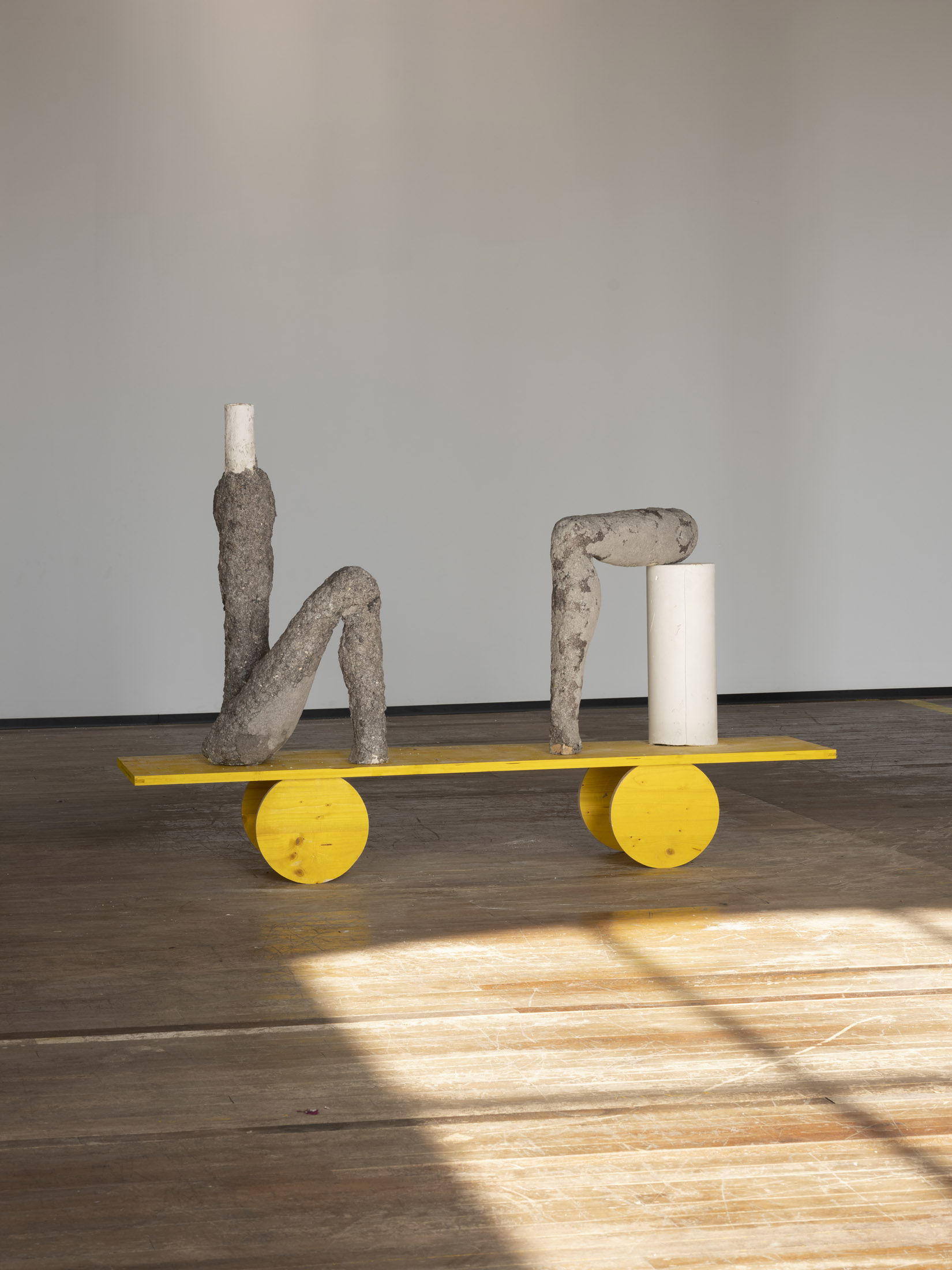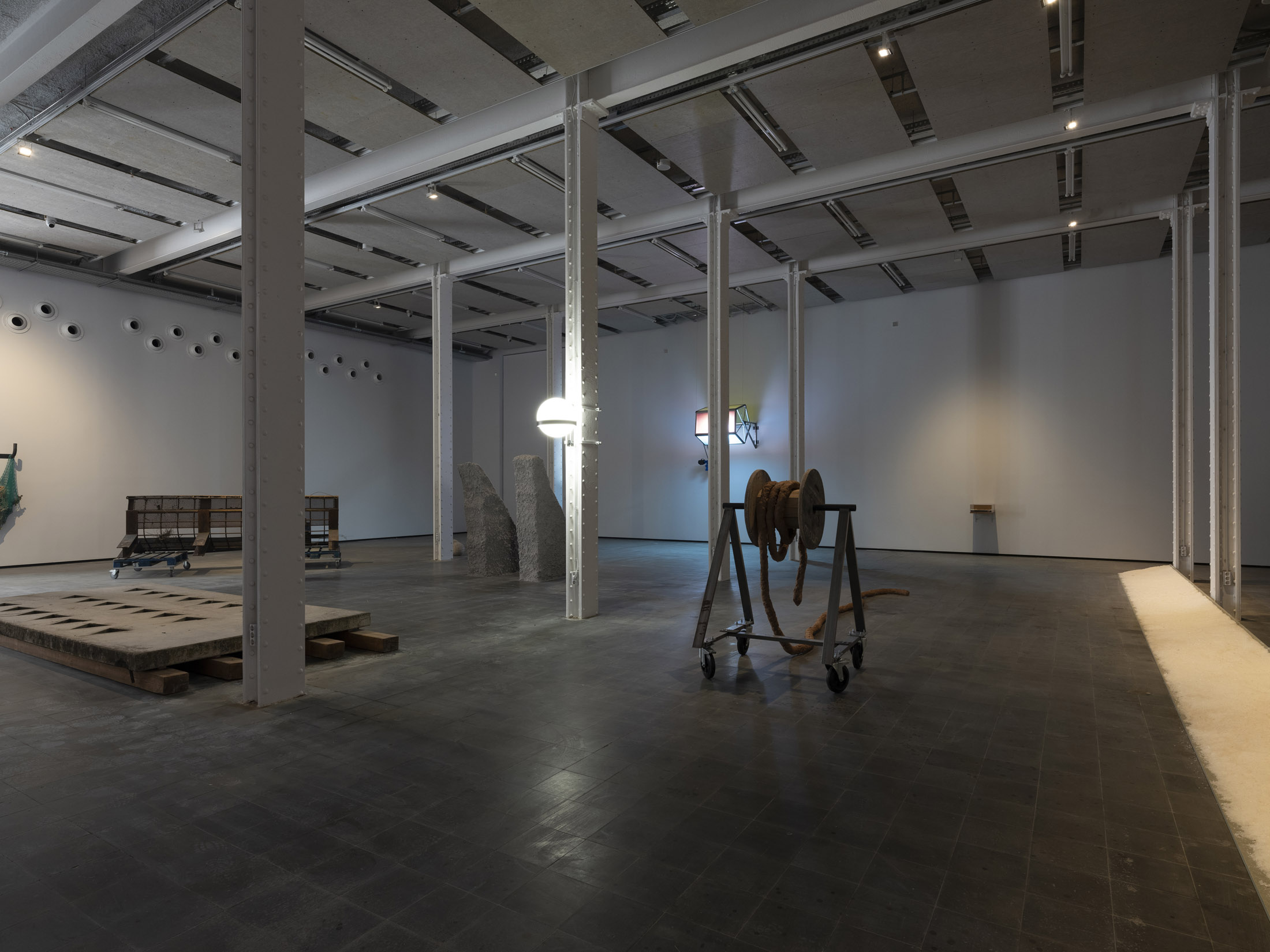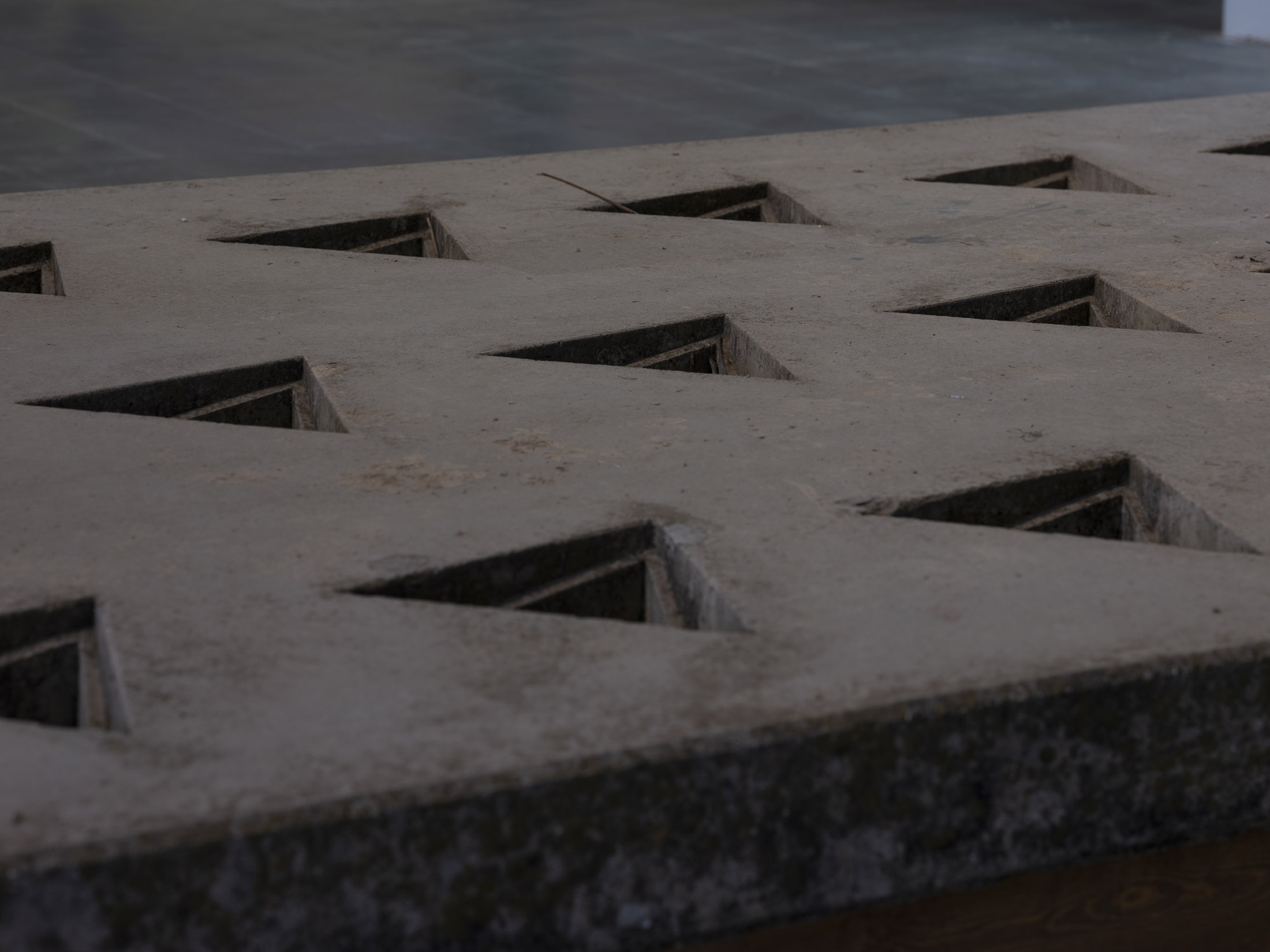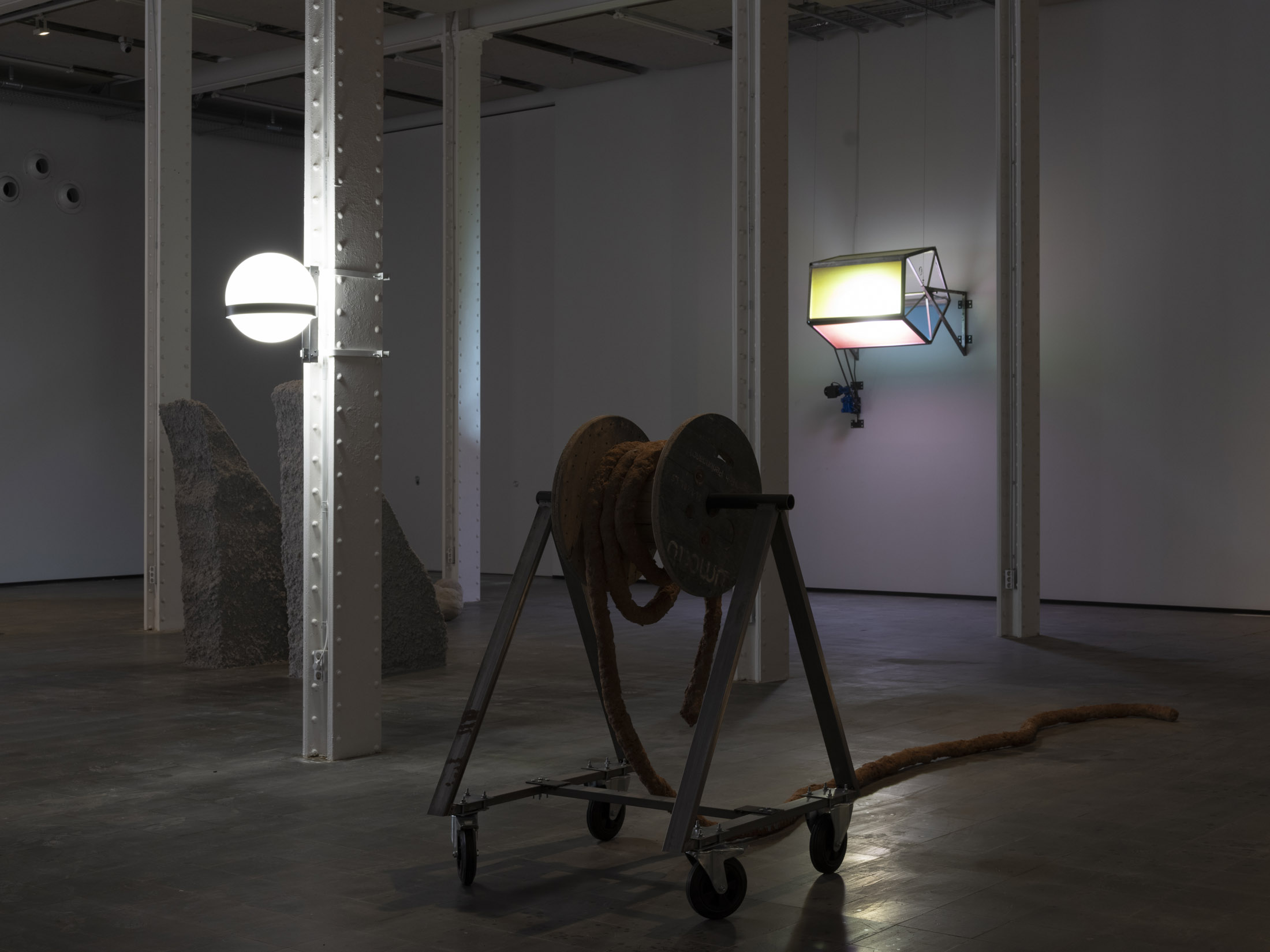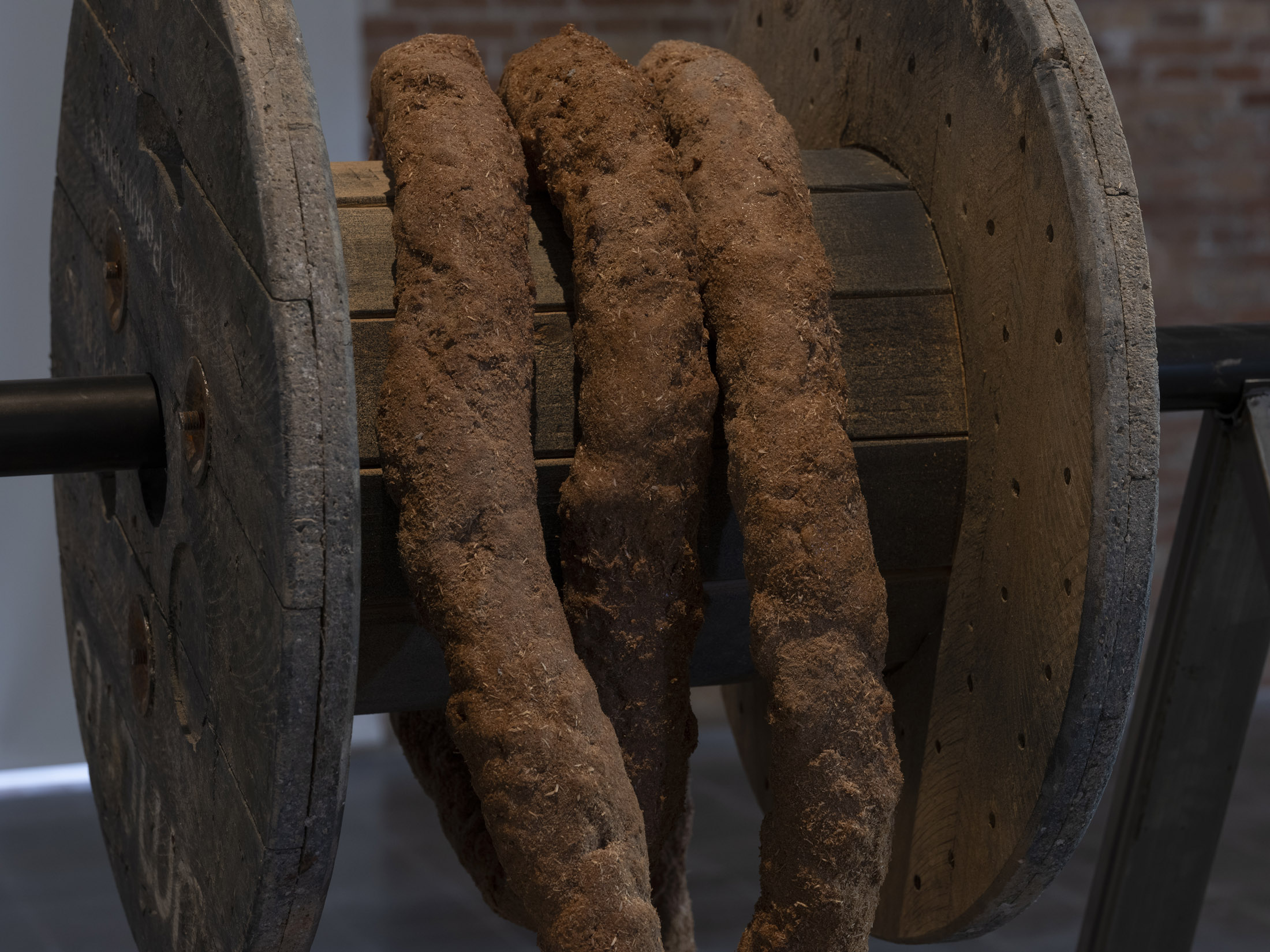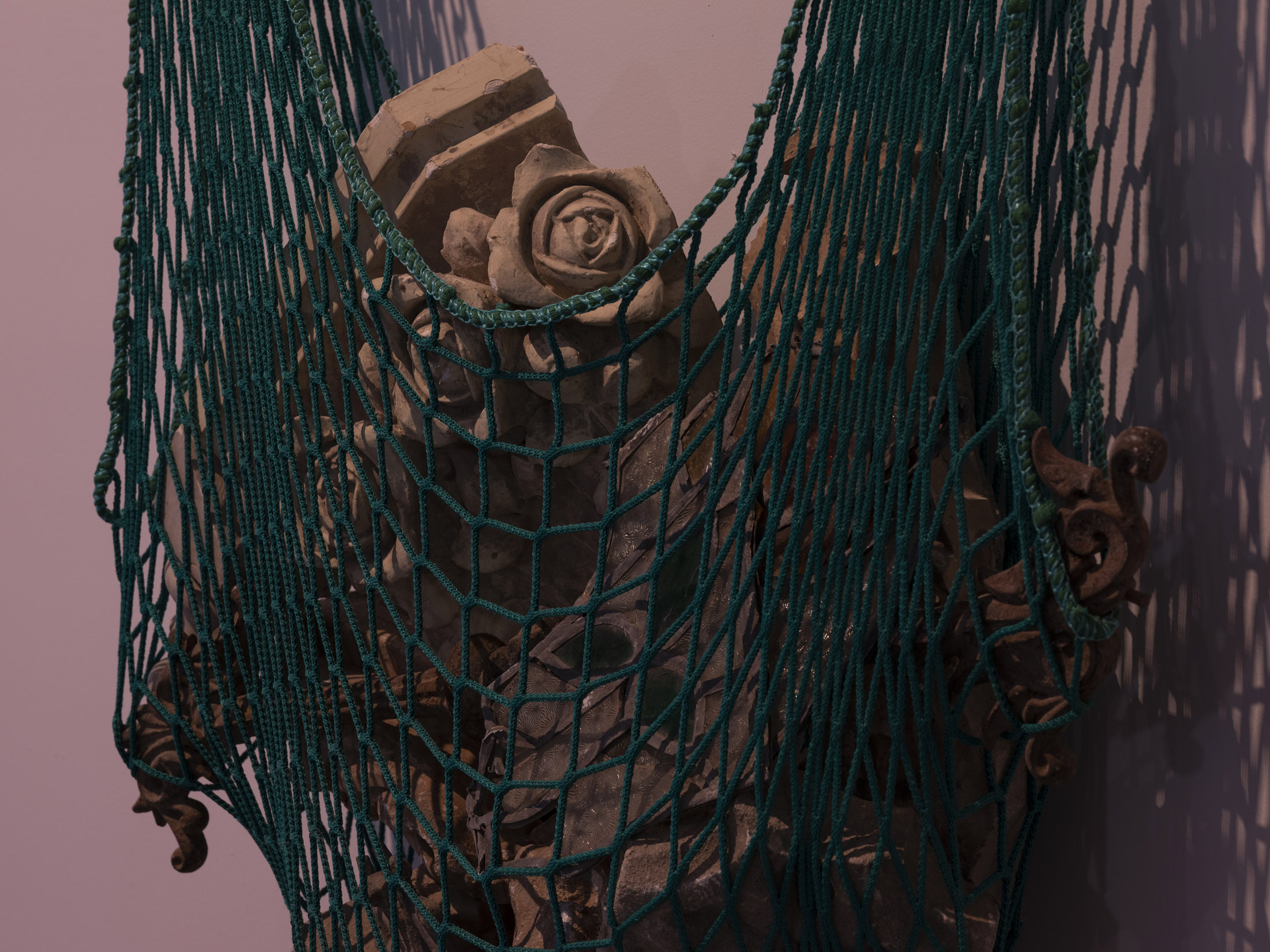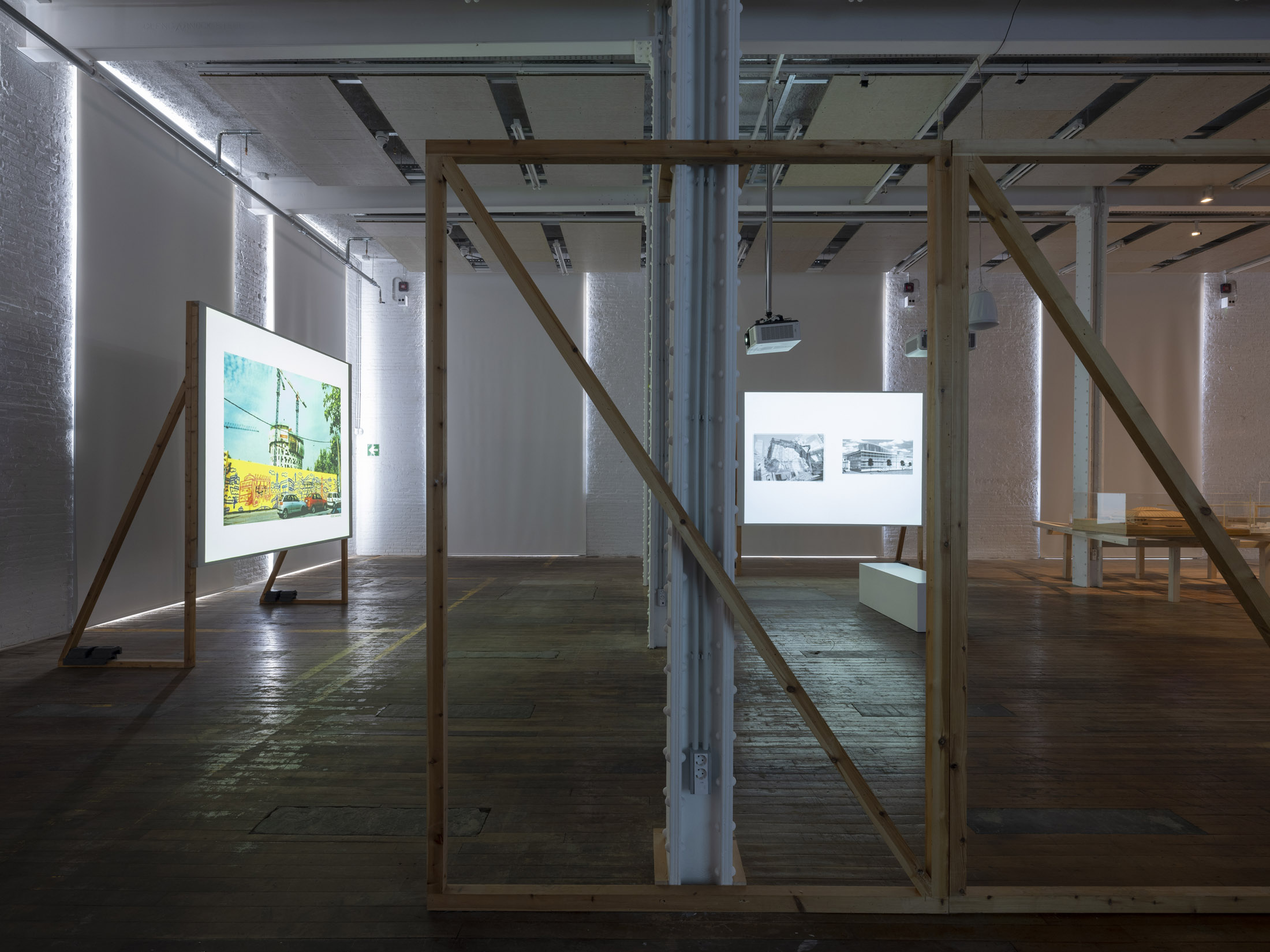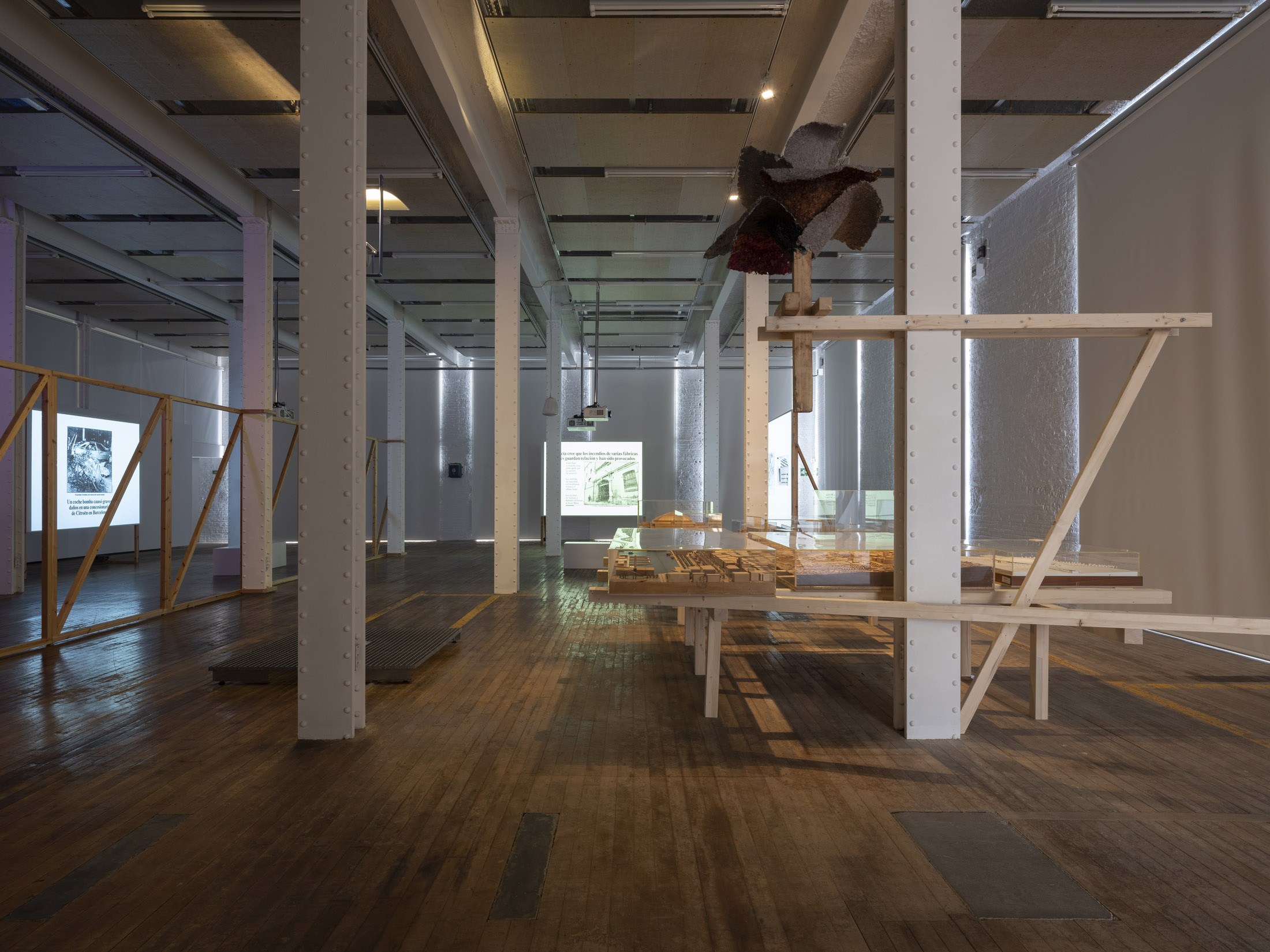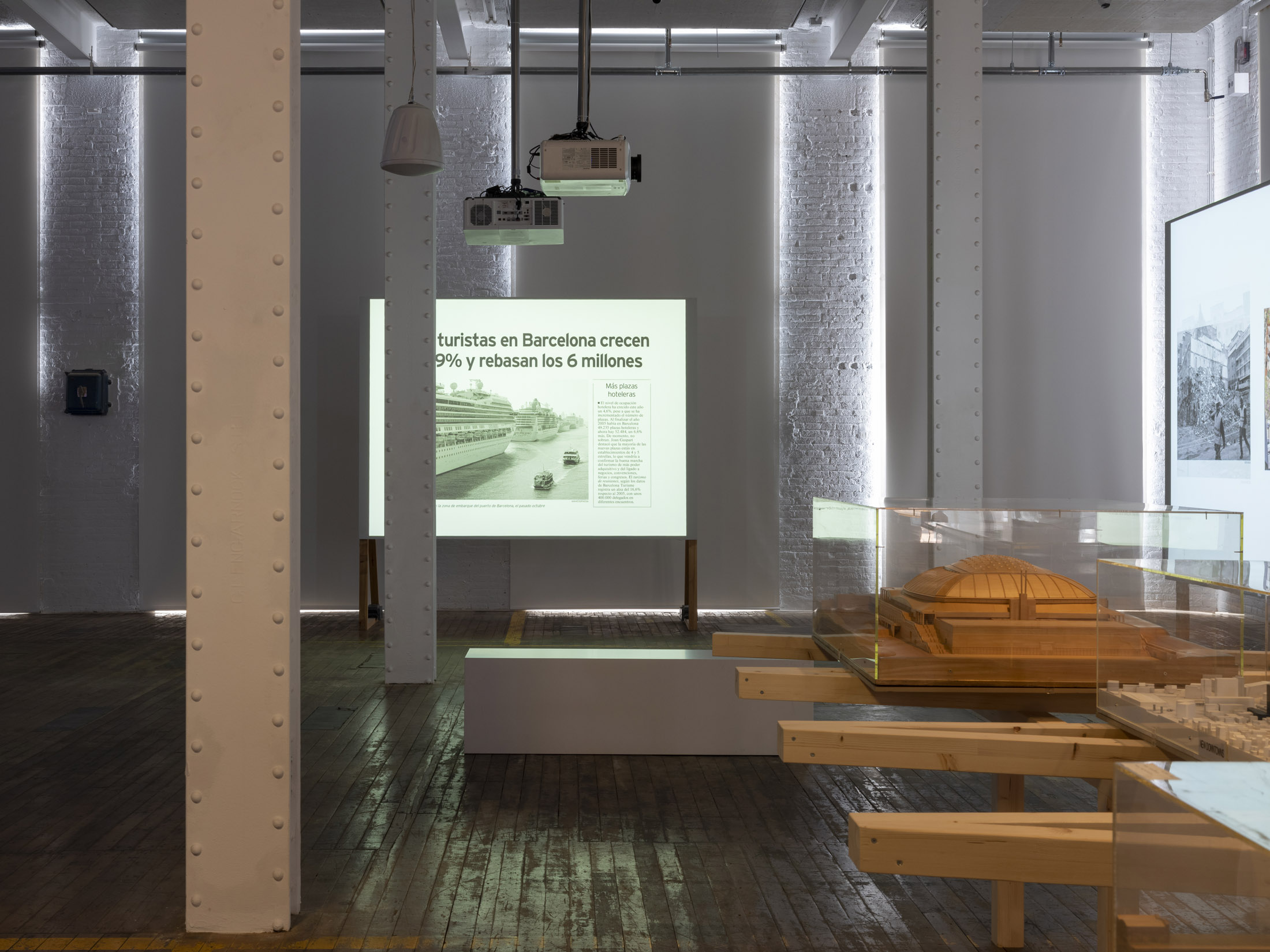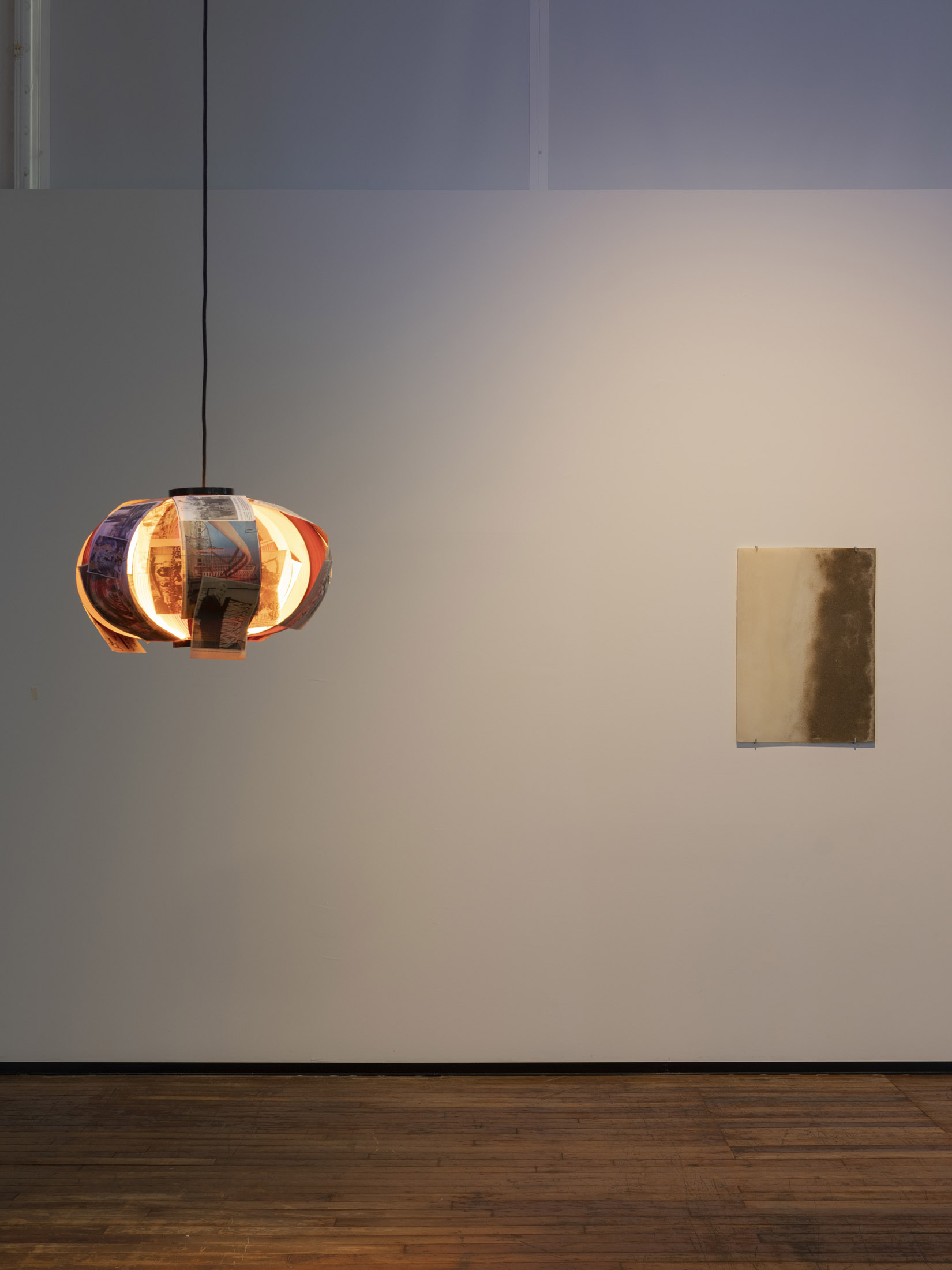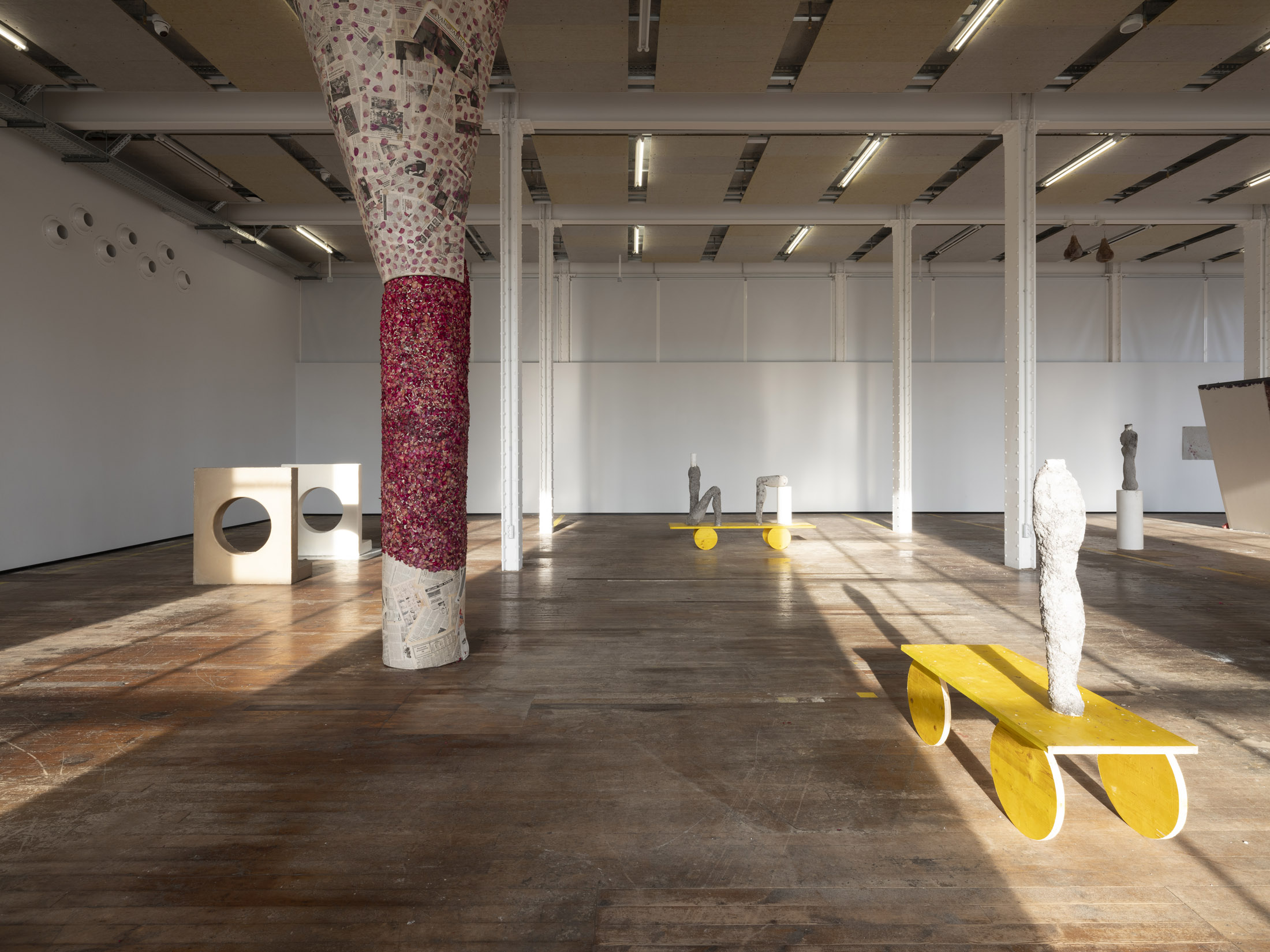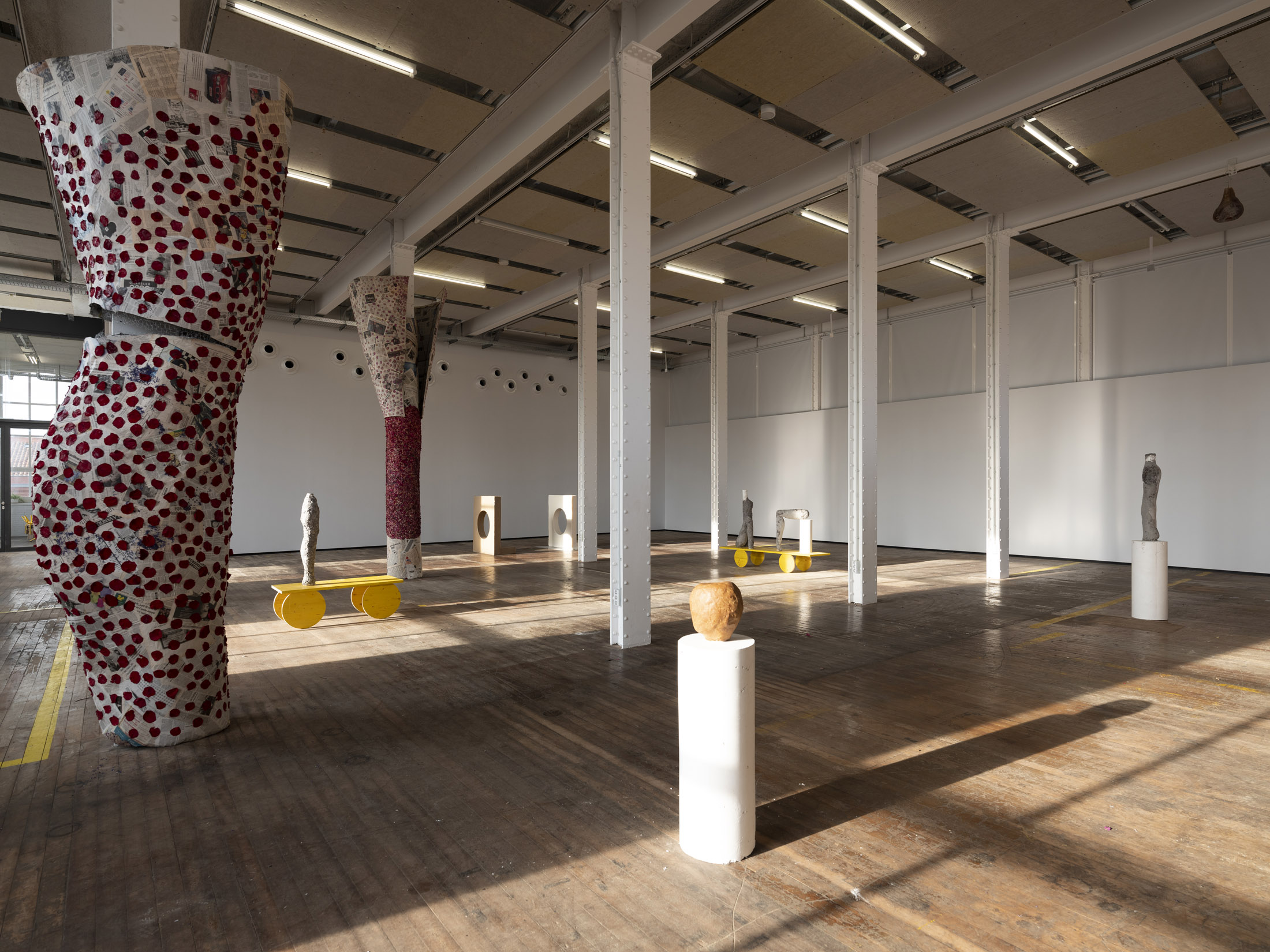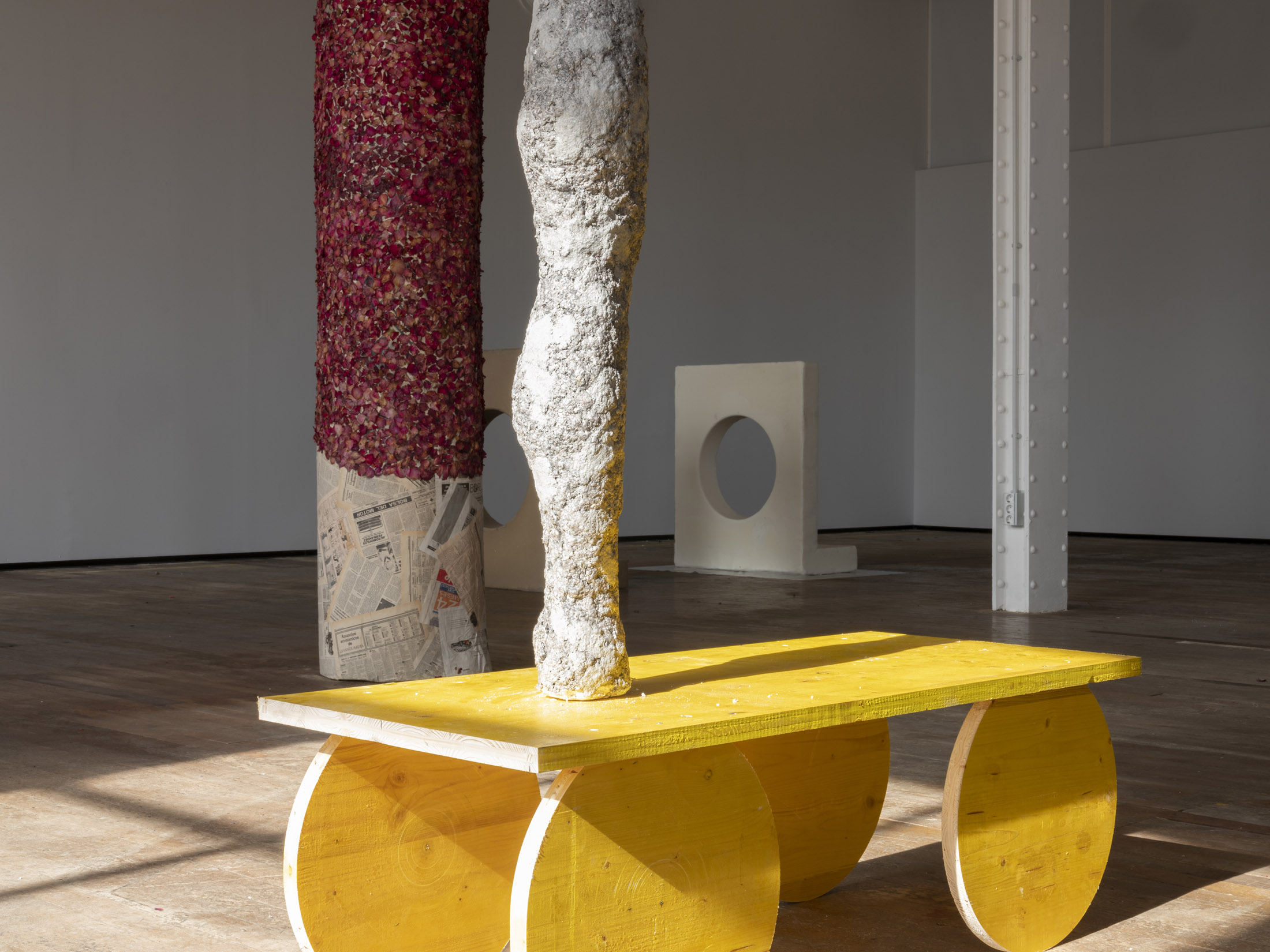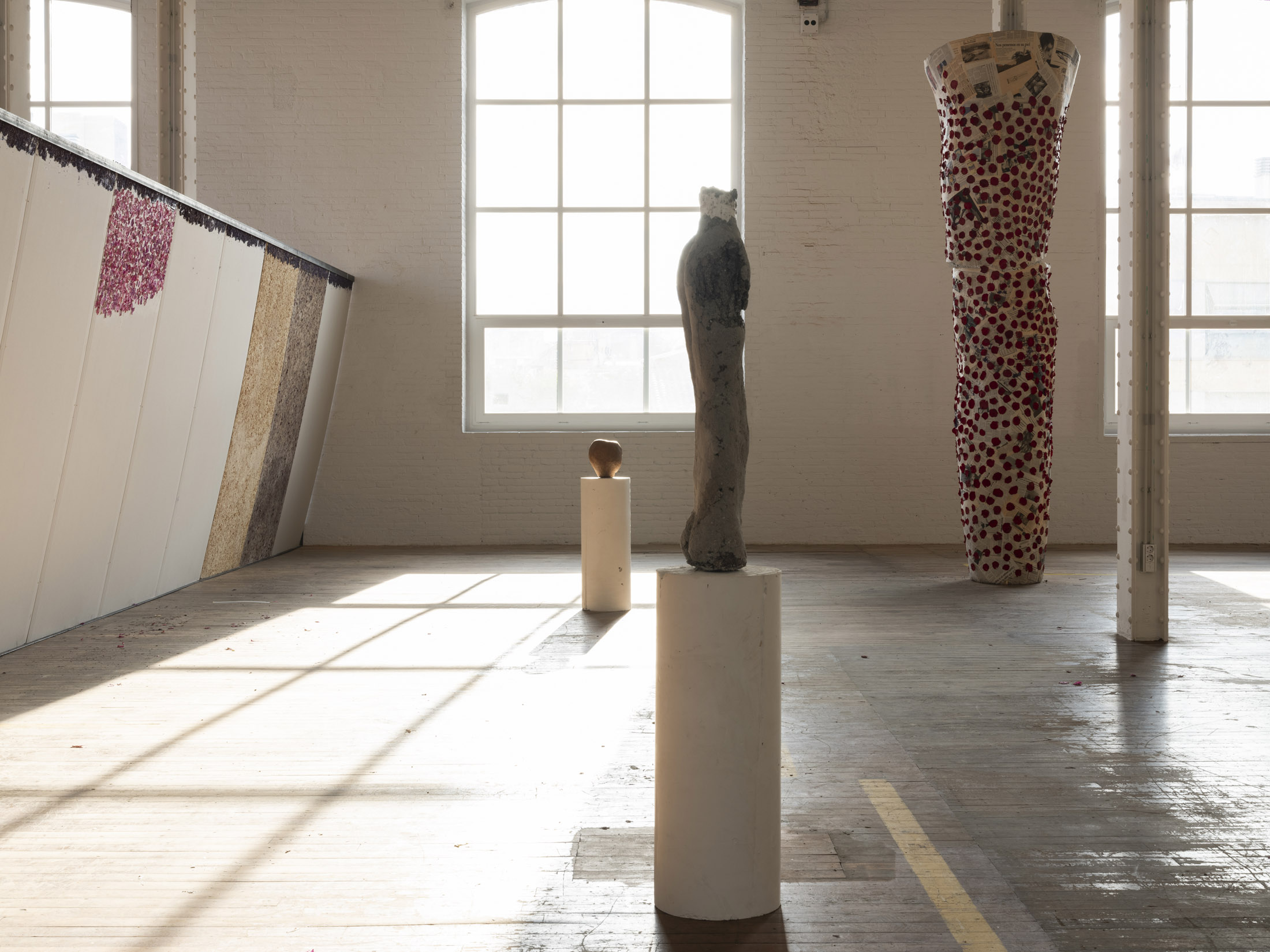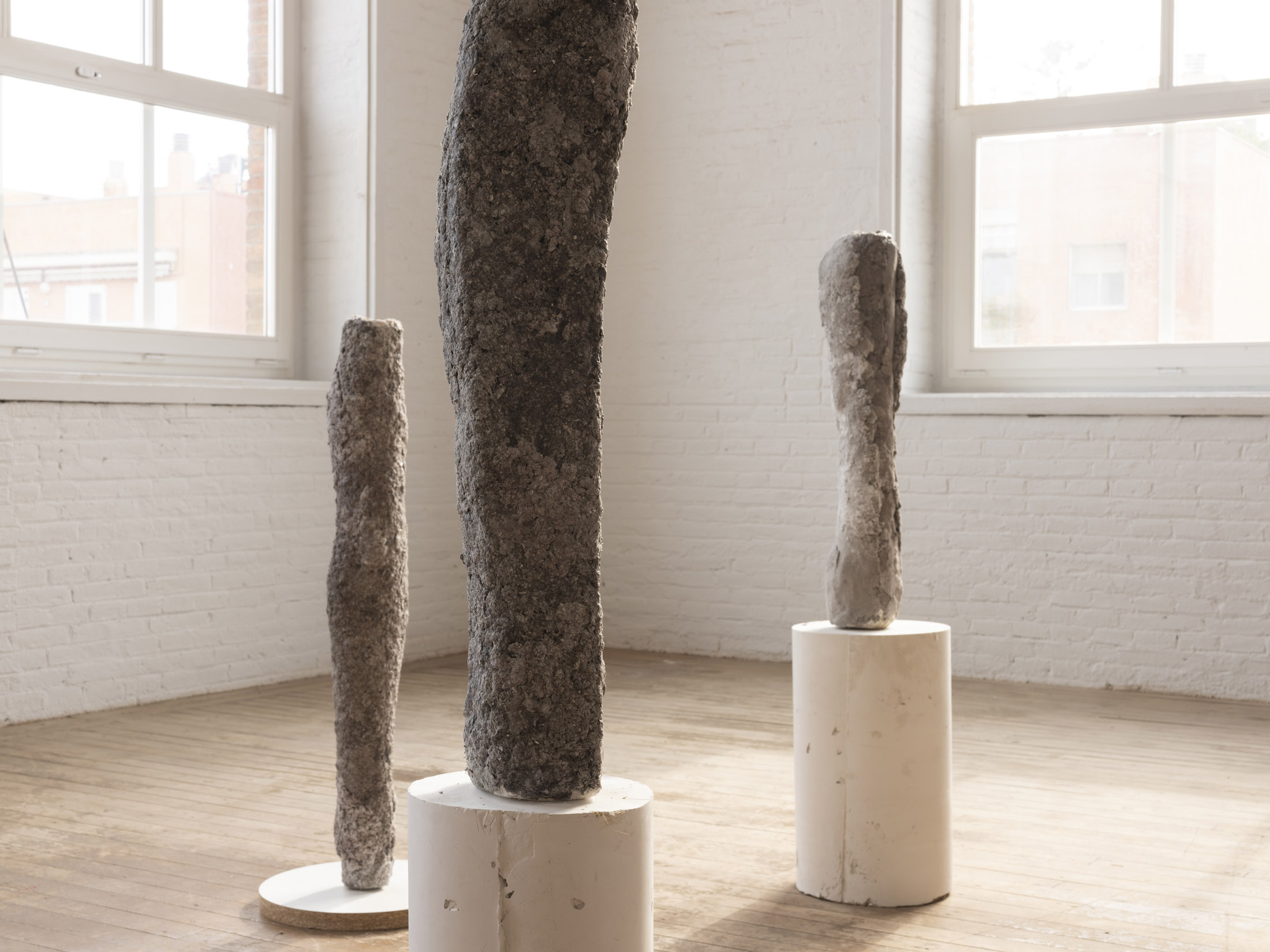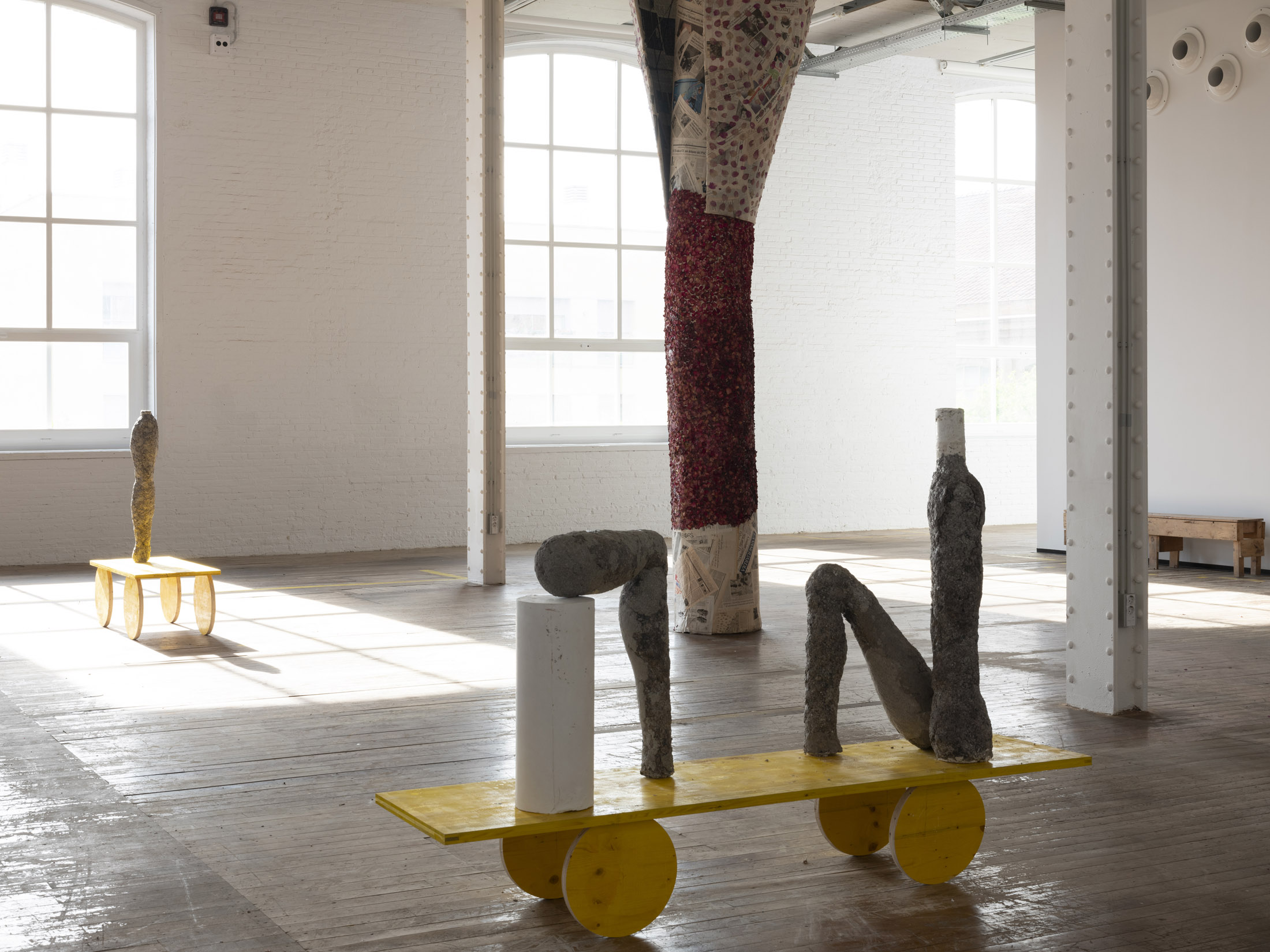Artist: David Bestué
Exhibition title: Ciutat de sorra (City of Sand)
Curated by: Marta Sesé
Venue: Centro de Arte Contemporáneo de Barcelona – Fabra i Coats, Barcelona, Spain
Date: June 10 – October 22, 2023
Photography: ©Aleix Plademunt / all images copyright and courtesy of the artist and Centro de Arte Contemporáneo de Barcelona – Fabra i Coats
A huge storm washes up tins and plastic from the past forty years onto the sand of the beach. These materials reached the sea in many different ways, perhaps through the drains, now materially more sophisticated than hundreds or thousands of years ago. The remnants of a mediaeval well, now in a construction sack in the storeroom of a museum, hold different vestiges that make it possible to discover the daily habits of people who were here long before we were. Close to Estació de França, a series of excavations carried out below sea level, for the construction of housing, uncovered fragments of a mediaeval boat, which have now been turned into a museum piece. At a junction beneath the Ronda de Dalt ring road, close to the Vall d’Hebron Hospital, piled in a corner, are large pieces of concrete that were once part of the Olympic Archery Field, designed by Enric Miralles and Carme Pinós for the Olympic Games. In the centre of Barcelona, on Paradís street, a mill wheel embedded in the ground marks the highest spot – just over 16 metres above sea level – of what was the Roman city, mount Tàber. David Bestué, who had all these references at the forefront of his mind when conceptualising this exhibition, sees this wheel as an element that devours everything, crushing the city, turning it into sand.
For City of Sand, David Bestué proposes a shift in the way we look at the city of Barcelona. Understanding it as material and symbol, the artist contrasts the projected dream idea of city – ambitious urban projects in model form or the conception of the city from a viewpoint of progress and technological advances – with popular and counter imagery – in the shape of images in the press, revolts and cries that go against the grain, set out in newspapers, which become shared impressions in the collective subconscious of all those who inhabit the city. In a way, Bestué builds a contra-history out of what can be found on the fringes, using the scraps, remnants and debris.
Rather than constructing new imagery, City of Sand establishes a framework for playing with the troubled, disturbed times – the unlived and recent pasts, the presents and the futures to come – so as to find the seeds from which imageries of the city – and sculpture – can be harvested, like a place of possibility and strength. Although in many cases he works with deconstructed materials, using objects pulverised to grade zero, his sculptural work is compositional and propositional. In an analogy with poetry, which is continuously referenced and has accompanied Bestué throughout his career, his conception of time – the summoning of historical times – through sculpture can be linked to that of Juan Ramón Jiménez’s through writing: “[…] a writing on time, a memorial fusion of ideology and anecdote, with no chronological order; like the never-ending string of my life, unravelled backwards”.[1] The exhibition brings together new and recently produced work that integrates, in its formation, material elements connected to the city that, somehow, capture its most effective and poetic life. There are also works of diverse authorship that have been loaned by various institutions and that, in one way or another, bear the collective image of Barcelona.
On the ground floor, elements from pasts not lived by the artist are displayed. Bestué brings together, without hierarchy or order, a series of objects and materials that, as a whole, form a sort of (broken) museum of curiosities, in which different historical and undefined times are mixed together. It is not about specific forms of the past, but about the past in its unpolished form. Two triangles – a reference to Ulrich Rückriem’s granite wedges installed in Pla de Palau – made of shredded newspaper, of city waste, welcome us; an account with the last sample collected of Stachys maritima, a plant that grows and lives on sand dunes and which is now extinct in Barcelona; and a reel of rope made from shredded palm trees, which refers to the textile origins of the factory where the exhibition is being held. All coexist, together with other elements, beneath lighting provided by a re-creation of Montjuïc’s Font Màgica lighting system and an MBM-2 wall light.
The images – radically figurative –, rarely seen before in Bestué’s exhibitions, despite being continually present in his work processes and publications, take centre stage on the first floor. We are in a timeframe that spans, approximately, from 1979 to 2011, from the first democratic city council to the end of an era and the beginning of a new political paradigm with the 15M movement. Bestué has made a sweep of all the editions of the La Vanguardia newspaper from this period. This exercise – contrary to the inertness of sculptural material – is a way of working with time, with facts, bringing them to the present. The four projections – destruction, models, contra and threads, the latter understood as a way of spinning themes that remain constant throughout this enormous reading – are at odds with the set of models, which are representative of the projected, ambitious, ideal city. Thousands of images that reflect a kind of change in the city’s mood, as well as a loss or disfigurement of its image. The rhythm of the projections is also accompanied by music, composed by Hidrogenesse, a popular song that points to some of the events that form part of the imagery.
The present and the power of the future occupy the upper floor. Illuminated, for the first time, with natural light, this room holds fresh, living materials. A wall of bougainvillaea leaves merges with the horizon of the sea; sugared pears hang above us; a wishful back, made of city waste such as newspaper, bougainvillaea and fragments of stone from a facade; the pillars envelop us in eroticism and desire because, as with the poetry of Olvido García Valdés,[2] Bestué’s sculptural research for City of Sand, at the same time retains (registering, pointing out what is unjust at a time in which we live in a continuous present) and releases (projecting desire, pleasure and, why not, a kind of conciliation or optimism for whatever is to come).
For Bestué, the seed is an element that revolutionises the environment, transforms reality and makes a future possible, like finding the catalyst for crystallising resin, a detonator.
[1] Letter from Juan Ramón Jiménez to Enrique Díez-Canedo, dated 6 August 1943, explaining the creation of his long poem in prose Tiempo (Time). Jiménez, Juan Ramón. Cartas literarias. Barcelona: Bruguera, 1977, pp. 65-66.
[2] Olvido García Valdés is a poet whose creations closely accompany David Bestué’s current period of research and artistic production. In City of Sand and in the exhibition that Bestué will open at the Patio Herreriano in Valladolid next July – both considered part of the same project despite each having specific idiosyncrasies – there are echoes of the poetry and thinking of García Valdés.

